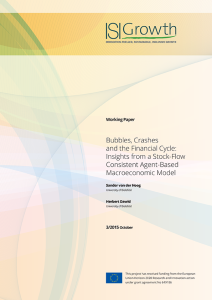This paper explores how different credit market- and banking regulations affect business fluctuations. Capital adequacy- and reserve requirements are analysed for their effect on the risk of severe downturns. We develop an agent-based macroeconomic model in which financial contagion is transmitted through balance sheets in an endogenous firm-bank network, that incorporates firm bankruptcy and heterogeneity among banks to capture the fact that contagion effects are bank-specific. Using concepts from the empirical literature to identify amplitude and duration of recessions and expansions we show that more stringent liquidity regulations are best to dampen output fluctuations and prevent severe downturns. Under such regulations both leverage along expansions and amplitude of recessions become smaller. More stringent capital requirements induce larger output fluctuations and lead to deeper, more fragile recessions. This indicates that the capital adequacy requirement is pro-cyclical and therefore not advisable as a measure to prevent financial contagion.
Bubbles, crashes and the financial cycle: insights from a stock-flow consistent agent-based macroeconomic model
Sander van der Hoog
University of Bielefeld
Herbert Dawid
University of Bielefeld

